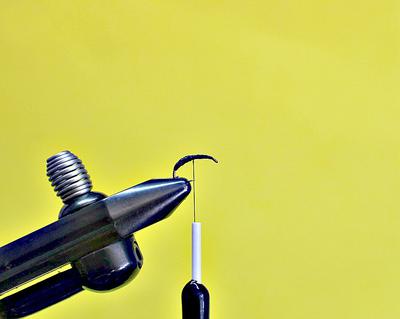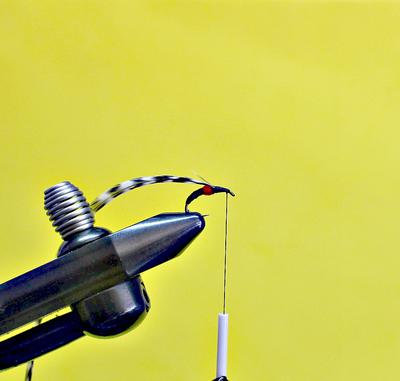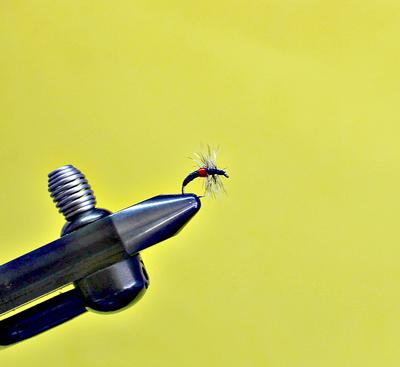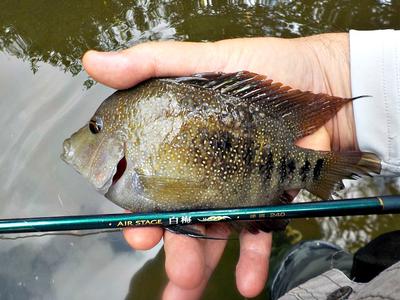Herb's "Black Thread-and-Hen"
by John Evans
(San Antonio, TX)

6 or 7 wraps of .015 wire are pushed toward the bend of the hook and covered with a tapered body of black thread.
I’d like to pass along a great fly pattern for panfish from Herb S. up in Southwest Michigan. I’ve made a couple of little tweaks for my Texas warm water situations, but the credit goes to him for the original idea. He calls this pattern the “Black Thread-and-Hen,” and he presented the fly in a comment on a blog that I posted on the TenkaraBum website. The subject of my post was micro-fishing with the excellent Nissin Air Stage Hakubai 240. Herb suggested that the “Black Thread-and-Hen” might work well with this ultralight rod.
Boy, was he right! It’s easy to tie, even for ol’ fumble fingers here, and I’ve already caught lots of fish with it.
Here are the materials for my warm-water version: Daiichi 1120, size 14 hook; .015 lead free wire; suitable hackle; black 6/0 thread; and red floss. Herb’s original pattern does not include the wire or the floss, so I’d encourage you to try the fly both ways.
I put on 6 or 7 wraps of the lead-free wire and slide the wraps to the back third of the hook. I then cover the wire and the hook with black thread and taper the body. Next, I take about 3 wraps of 4-strand red floss on top of each other just in front of the wire. You don’t want to over-flash this fly. Finally, I palmer in two or three wraps of hackle in front of the floss and whip finish at the head. A touch of cement finishes the job. You might notice in the above photos that I used grizzly-colored dry fly hackle because . . . well . . . that’s what I had! The pictures show the process.
This fly has a moderate size and sink rate, which helps it work in many situations. The lead-free wire toward the bend makes the fly enter the water butt down and hackle up, which helps the hackle pulsate in the water. Also, the pattern resembles many aquatic insects but nothing in particular. It’s a great general attractor pattern, and the panfish in my area slam it with gusto. To my mind, the pattern follows the tradition of simple, effective flies such as the old Stewart’s black spider and the many kebari patterns. Rather than being exact imitations, these flies suggest life, movement, and natural coloration.
As a side note, I want to encourage other tenkara anglers to tie their own flies. As I’ve mentioned before in these posts, I suffer from a familial hand tremor that makes fly tying challenging, but you just stay after it. Hey, it’s good therapy, plus, there’s something special about catching a fish on a fly that you’ve tied with your own hands. Give it a go!
Again, many thanks to Herb S. in Southwest Michigan, who is the genesis for the Black Thread-and-Hen. It’s easy to tie, attractive to many panfish, and great for ultralight tenkara rods—a winning combination!
Return to Your Tenkara Stories.
“The bitterness of poor quality remains long after the sweetness of low price is forgotten” - Benjamin Franklin
"Be sure in casting, that your fly fall first into the water, for if the line fall first, it scares or frightens the fish..." -
Col. Robert Venables 1662
As age slows my pace, I will become more like the heron.
Warning:
The hooks are sharp.
The coffee's hot.
The fish are slippery when wet.
Beware of the Dogma
Currently processing orders that were received Mar 8.









